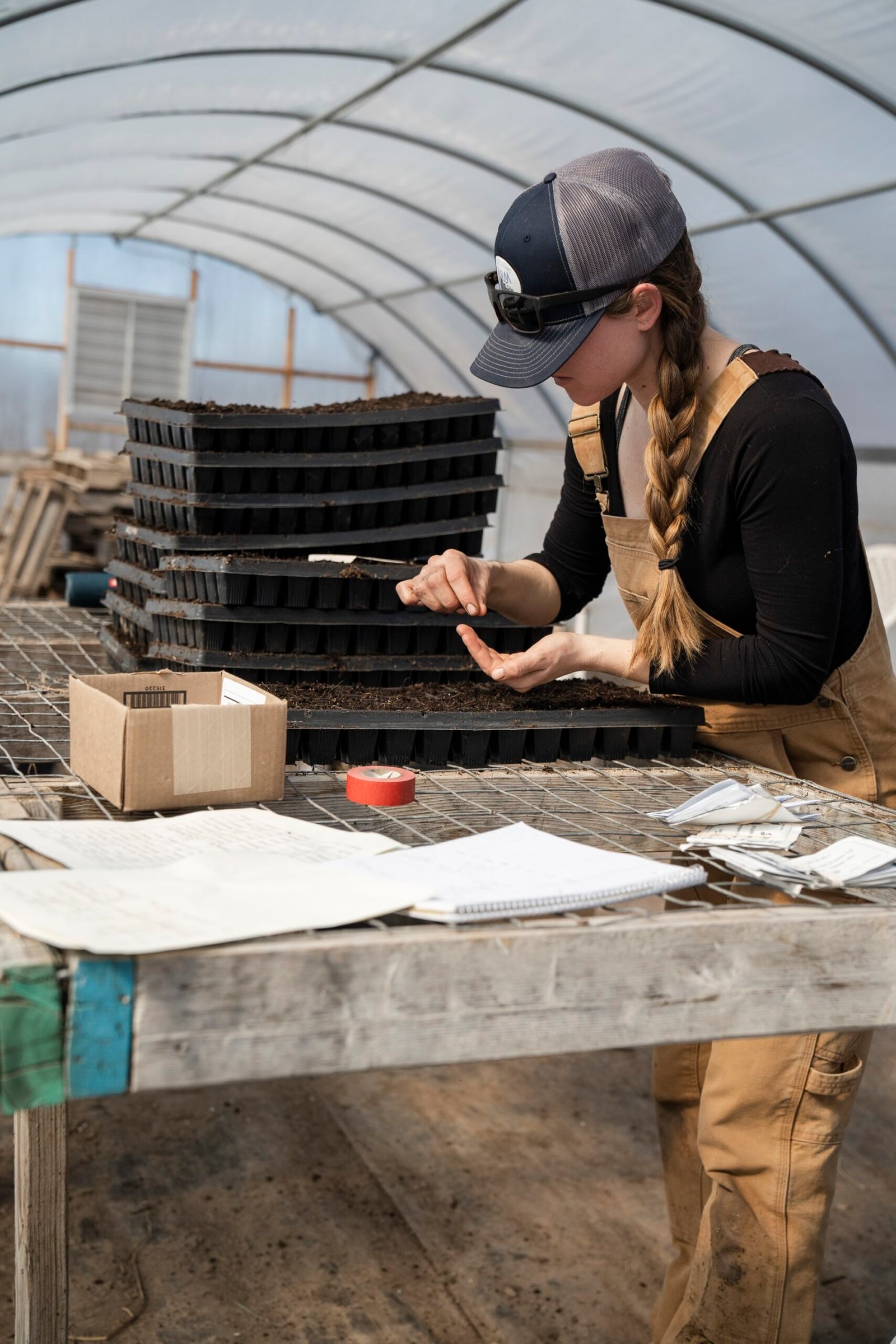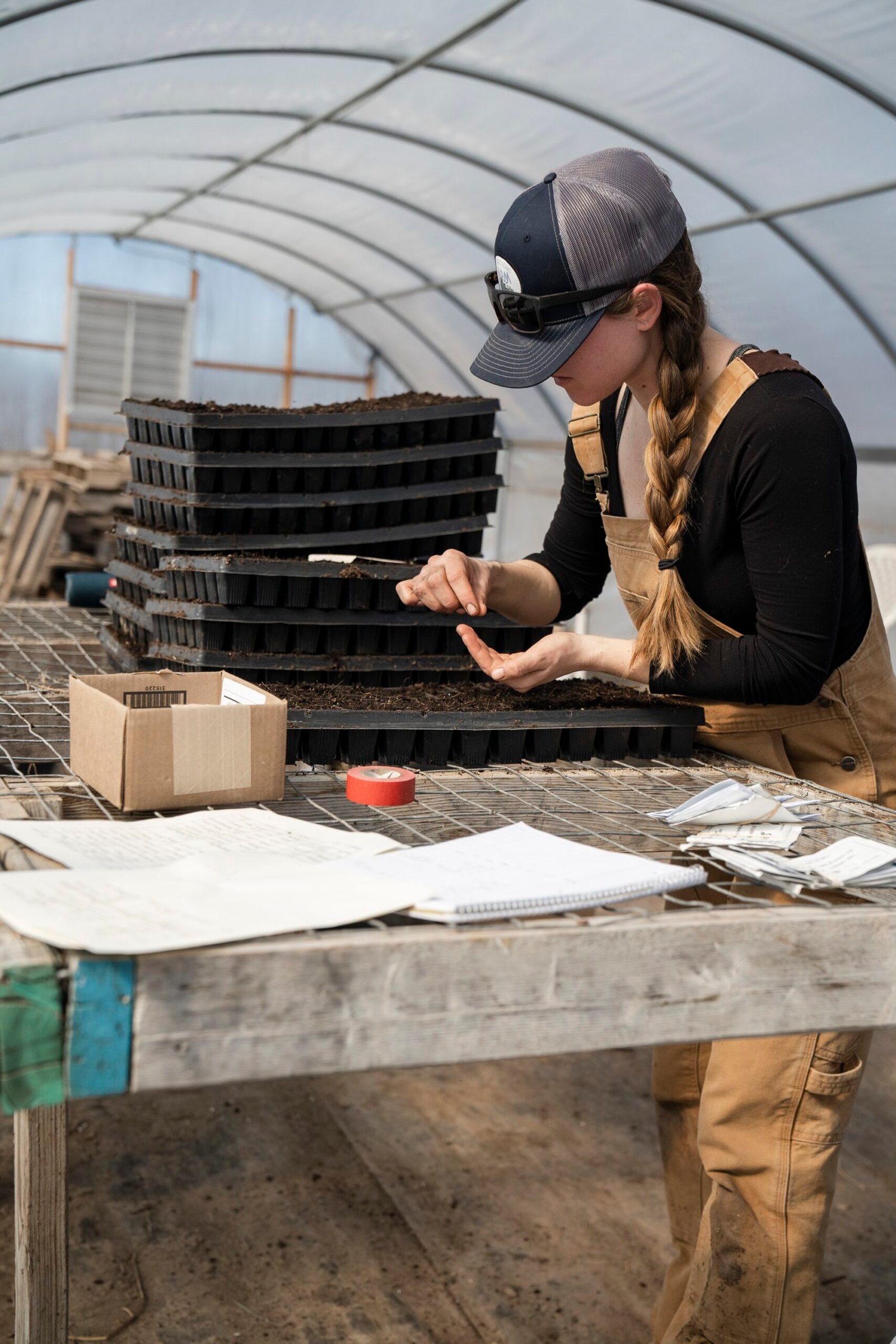You have always dreamed of having a beautiful garden that not only adds beauty to your surroundings but also contributes positively to the environment. And now, with the help of this article, you can turn that dream into a reality. In this guide, we will show you how to create and manage a sustainable garden, using eco-friendly practices that not only benefit your plants but also the planet. From choosing the right plants to implementing smart irrigation techniques, you will be equipped with all the knowledge and tips you need to create a garden that thrives while minimizing its impact on the Earth. Get ready to embark on a journey to transform your outdoor space into a haven of sustainability and natural beauty.
Site Selection
Sunlight requirements
When selecting a site for your sustainable garden, it’s important to consider the amount of sunlight the area receives. Most vegetables and flowering plants require at least six hours of direct sunlight each day to thrive. Take note of any trees, structures, or other factors that may cast shade on your garden throughout the day. By understanding the sunlight patterns of your chosen site, you can strategically place your plants to ensure they receive the necessary amount of light.
Soil type and condition
The soil in your garden plays a crucial role in plant growth and sustainability. Different types of plants thrive in different soil conditions, so it’s important to know the composition of your soil. Conduct a soil test to determine its pH level, fertility, and structure. This will help you understand which nutrients may be lacking and whether any amendments are necessary. Improving soil health through regular additions of organic matter, such as compost, can greatly enhance the fertility and structure of your soil, providing a strong foundation for your plants.
Drainage
Good drainage is essential for a healthy garden. Standing water can drown plant roots and lead to root rot and other diseases. Evaluate the site’s drainage by observing how water flows after rainfall. If there are areas prone to pooling water, consider implementing drainage solutions such as French drains or raised beds. Adequate drainage will prevent waterlogged soil and protect your plants from related issues, ensuring their long-term sustainability.
Access to water source
Access to a reliable water source is vital for a sustainable garden. Ideally, your garden should be located near a water source, such as a hose spigot or rainwater harvesting system. This will make watering your plants more convenient and efficient. Consider the proximity of your chosen site to these water sources and plan accordingly to minimize water waste and ensure easy access for watering your garden.
Climate considerations
Before starting your garden, it’s important to consider your local climate and how it may impact plant growth. Different plants have different temperature and humidity requirements, so choose varieties that are well-suited to your climate zone. Additionally, consider factors such as frost dates, extreme weather events, and seasonal variations in temperature and rainfall. By selecting plants that are adapted to your climate, you’ll increase their chances of thriving and minimize the need for excessive maintenance or artificial interventions.
Design and Layout
Evaluate available space
When designing your sustainable garden, it’s important to evaluate the available space and consider its limitations and potentials. Take into account factors such as the size and shape of the area, existing structures, and any potential obstacles. This evaluation will help you determine the overall layout and arrangement of your garden beds, paths, and other features.
Zoning different areas
Dividing your garden into different zones can help you optimize the use of space and create a more organized and efficient layout. Consider grouping plants with similar water and sunlight requirements together. You could also designate separate zones for different purposes, such as a vegetable garden, a flower garden, or a herb garden. Zoning will not only make it easier for you to manage and maintain your garden but also allow you to better cater to the specific needs of different plants.
Create paths and access points
Creating well-defined paths and access points in your garden is essential for both practicality and aesthetics. Well-designed paths will make it easier to navigate your garden and provide access to plants for maintenance and harvesting. Using materials such as gravel, wood chips, or paving stones can help delineate the paths and prevent soil erosion. Additionally, consider incorporating wider access points to accommodate wheelbarrows, garden tools, and other equipment when needed.
Consider companion planting
Companion planting is a sustainable gardening practice that involves planting certain crops together in order to benefit one another. For example, planting aromatic herbs with vegetables can help repel pests, while certain flowers can attract beneficial insects that help control pests. Research companion planting strategies to find combinations that work well for the plants you’re growing. By incorporating companion planting into your garden design, you can create a more balanced ecosystem and reduce the need for chemical pesticides and fertilizers.
Plan for diversity in plant selection
Diversity is key to a sustainable garden. Planting a variety of species helps promote ecological balance, attracts beneficial insects and pollinators, and reduces the risk of pests and diseases. When selecting plants for your garden, aim for a mix of vegetables, herbs, flowers, and native species. By incorporating a wide range of plants, you’ll not only create a visually appealing garden but also support a healthy and resilient ecosystem.
Water Conservation
Install a rainwater harvesting system
One of the most effective ways to conserve water in your garden is by installing a rainwater harvesting system. This involves capturing and storing rainwater for later use in watering your plants. Rain barrels or larger storage tanks can be connected to your gutters to collect rainwater from your roof. By utilizing this free and abundant resource, you can significantly reduce your reliance on municipal water sources and lower your water bill.
Use mulch to retain moisture
Mulching is an important practice for water conservation in sustainable gardening. A layer of organic mulch, such as wood chips or straw, helps to retain moisture in the soil by reducing evaporation. It also acts as a barrier, preventing weed growth and protecting the soil from erosion. Apply a thick layer of mulch around your plants, being careful to keep it a few inches away from the stems to prevent rotting.
Implement drip irrigation
Drip irrigation is a highly efficient method of watering plants that minimizes water waste. It involves delivering water directly to the plant’s roots through a system of tubes and emitters. This targeted approach ensures that water is delivered precisely where it’s needed, reducing evaporation and runoff. Consider installing a drip irrigation system in your garden to conserve water and provide your plants with the necessary hydration.
Watering techniques and timings
To further conserve water, it’s essential to implement proper watering techniques and timings. Water your garden in the early morning or late evening when evaporation rates are lowest. This allows the water to penetrate the soil and be absorbed by the plants before the heat of the day causes excessive evaporation. Additionally, water your plants deeply but infrequently, encouraging deeper root growth and reducing water dependence.
Choose drought-tolerant plants
Selecting drought-tolerant plants is a smart approach to water conservation in a sustainable garden. These plants are adapted to survive in drier conditions and require less frequent watering. Research which plants are native to your region and naturally thrive in your climate’s conditions. By choosing plants well-suited to your environment, you’ll reduce the need for excessive watering and create a more sustainable and resilient garden.
Soil Health
Test and amend the soil
Testing your soil is an essential step in maintaining soil health. A soil test will provide valuable information about its nutrient levels and pH balance. Based on the test results, you can then amend your soil to ensure it has the right balance of nutrients for your plants. Common amendments include adding compost or organic matter, adjusting pH levels with lime or sulfur, and incorporating specific nutrients as needed.
Add organic matter and nutrients
Incorporating organic matter into your soil is crucial for long-term soil health and fertility. Compost, well-rotted manure, leaf mold, and other organic materials improve soil structure, enhance water retention, and boost nutrient content. Work organic matter into the soil before planting and continue to add it periodically as a top dressing or through composting. This ongoing addition of organic matter will nourish the soil and support the growth of healthy plants.
Practice crop rotation
Crop rotation is a sustainable gardening technique that involves changing the type of crops grown in specific areas each year. This helps prevent the buildup of pests and diseases that target specific plant families. Rotating crops also balances nutrient usage within the soil, as different plants have varying nutrient requirements. Plan your planting schedule to include crop rotation, ensuring that each planting area receives a different family of plants each year.
Mulching to improve soil structure
Mulching not only conserves water but also improves soil structure. As the organic mulch breaks down, it enriches the soil with organic matter and nutrients, enhancing its overall fertility. It also helps prevent soil compaction, erosion, and weed growth. Regularly replenish the mulch layer in your garden to maintain these benefits and create a healthier and more sustainable growing environment.
Encourage beneficial soil organisms
A thriving soil ecosystem is essential for sustainable gardening. Beneficial soil organisms, such as earthworms, bacteria, fungi, and other microorganisms, help decompose organic matter, break down nutrients, and improve soil structure. To encourage these organisms, avoid using chemical pesticides and fertilizers that can harm them. Instead, focus on creating a healthy and balanced soil ecosystem through organic gardening practices, such as adding compost and using natural pest control methods.

Plant Selection
Native plants
Choosing native plants is an excellent way to promote a sustainable garden. Native plants are adapted to local conditions, making them more resilient to pests, diseases, and climate fluctuations. They also provide habitat and food sources for native wildlife, supporting biodiversity. Research the native plants of your region and incorporate them into your garden design to create an ecologically balanced and sustainable landscape.
Diverse plant varieties
Diversity in plant varieties is essential for a sustainable garden. Different plants have varying growth habits, root structures, and nutrient requirements. By planting a range of species and varieties, you increase the overall resilience and productivity of your garden. Consider incorporating heirloom or unusual varieties alongside traditional ones to promote biodiversity and discover new flavors and textures for your meals.
Choosing pest-resistant plants
When selecting plants for your sustainable garden, choose varieties that are naturally resistant to pests and diseases. Planting resistant varieties can reduce the need for chemical pesticides and lower the risk of plant damage. Research which plants have natural defenses against common pests and diseases in your area and prioritize them when planning your garden.
Consider perennial and self-seeding plants
Perennial and self-seeding plants are valuable additions to a sustainable garden. Perennials come back year after year, reducing the need for replanting and minimizing soil disturbance. Self-seeding plants produce offspring naturally, filling gaps in your garden with new plants without any effort on your part. Including perennial and self-seeding plants in your garden design will enhance its long-term sustainability and reduce the need for constant replanting.
Incorporate pollinator-friendly plants
Pollinators, such as bees, butterflies, and birds, play a crucial role in plant reproduction and ecosystem health. By incorporating pollinator-friendly plants into your sustainable garden, you provide a food source and habitat for these important creatures. Choose plants that produce nectar-rich flowers and provide pollen for bees and other pollinators. By creating a welcoming environment for these species, you’ll not only support their populations but also increase the pollination rates of your plants, leading to better fruit and seed production.
Pest Control
Integrated pest management
Integrated pest management (IPM) is a holistic approach to pest control that aims to minimize reliance on chemical pesticides and prioritize natural solutions. This involves monitoring pest populations, identifying beneficial insects and predators, and employing physical, biological, and cultural methods to maintain a balanced ecosystem. Implementing IPM practices in your garden will protect your plants from excessive pest damage while minimizing harm to beneficial organisms and the environment.
Encourage natural predators
Encouraging natural predators is an effective way to control pests in a sustainable garden. Beneficial insects such as ladybugs, lacewings, and predatory wasps feed on common garden pests like aphids, caterpillars, and mites. You can attract these predators by incorporating plants that provide them with nectar, pollen, and shelter. Avoid using broad-spectrum insecticides that kill both harmful and beneficial insects, ensuring a healthy balance in your garden ecosystem.
Use physical barriers and traps
Physical barriers and traps can be useful tools for pest control in a sustainable garden. Row coverings, netting, and fences can protect your plants from pests such as birds, rabbits, and small mammals. Sticky traps, pheromone traps, and insect vacuums can help control specific pests without the use of chemical pesticides. Utilize these methods as part of your pest management strategy to protect your plants while minimizing environmental impact.
Practice companion planting
Companion planting, as mentioned earlier, can also play a role in pest control. Some plants naturally repel pests or attract beneficial insects that prey on pests. For example, marigolds repel nematodes, while dill and fennel attract ladybugs and lacewings. Include these companion plants strategically throughout your garden to deter pests and create a more balanced ecosystem. By planting the right combinations, you can reduce pest pressures and maintain a healthy garden.
Implement organic pest control methods
Organic pest control methods prioritize natural and non-toxic solutions over chemical pesticides. There are numerous organic pest control methods you can employ in your sustainable garden. These include using insecticidal soaps, neem oil sprays, or horticultural oils to control pests. You can also create homemade insect repellents using ingredients like garlic, chili powder, or vinegar. Regularly inspect your plants for signs of pests and intervene early to prevent infestations from spreading.
Composting and Recycling
Establish a composting system
Composting is an essential practice for a sustainable garden. It involves transforming organic waste, such as kitchen scraps and yard trimmings, into nutrient-rich compost that can be used to improve soil fertility. Set up a composting system in your garden, utilizing a compost bin or pile. Regularly add organic material, such as fruit and vegetable scraps, coffee grounds, and shredded leaves, and turn the compost to promote decomposition. The resulting compost can then be used as a natural fertilizer for your plants.
Use kitchen scraps and yard waste
To support your composting efforts, collect kitchen scraps and yard waste to add to your compost pile. Fruit and vegetable peels, eggshells, coffee grounds, tea leaves, and grass clippings are all excellent sources of organic material. Avoid adding meat, dairy, and oily foods to your compost, as they can attract pests and slow down the composting process. By diverting these waste materials from the landfill and turning them into compost, you’ll close the loop and create a more sustainable garden ecosystem.
Avoid chemical fertilizers
Chemical fertilizers may provide a quick nutrient boost for your plants, but they can have negative impacts on soil health and the environment. Instead, rely on organic sources of nutrients, such as compost, well-rotted manure, and organic fertilizers, to nourish your plants naturally. These organic alternatives improve soil structure, promote beneficial soil organisms, and release nutrients slowly over time, providing sustained nourishment for your plants without the negative side effects of chemical fertilizers.
Recycle garden waste
Recycling garden waste is an essential practice in sustainable gardening. Rather than disposing of plant trimmings and debris, recycle them back into your garden. Shredded branches, leaves, and other plant material can be used as mulch, incorporated into compost, or even turned into leaf mold. By recycling garden waste, you minimize the need for external inputs and create a closed-loop system within your garden.
Reuse materials and resources
Embracing the concept of reusing materials and resources is integral to sustainable gardening. Look for opportunities to repurpose items before purchasing new ones. For example, use old pallets to create raised beds, repurpose containers as pots, or salvage and reuse building materials for garden structures. Additionally, collect rainwater using barrels or storage tanks, reuse household greywater, and make use of natural materials such as fallen leaves or grass clippings. By reducing waste and finding creative ways to reuse resources, you’ll minimize your environmental impact and create a more sustainable garden.
Wildlife and Biodiversity
Create habitats for wildlife
A sustainable garden is not only a place for growing plants but also a habitat for wildlife. Include features that attract and provide habitat for birds, butterflies, bees, and other beneficial creatures. Install birdhouses, bat boxes, or insect hotels to offer shelter. Plant trees and shrubs that provide nesting sites and food sources. By creating a welcoming environment for wildlife, you’ll contribute to the conservation of native species and enhance the biodiversity of your garden.
Provide food and water sources
To support wildlife, it’s important to provide food and water sources in your garden. Plant native species that produce berries, seeds, or nectar, which serve as natural food sources for birds and insects. Consider leaving out shallow dishes of water or installing a small pond to provide drinking and bathing opportunities for birds and other wildlife. By meeting their basic needs, you’ll attract a variety of wildlife species and create a balanced ecosystem within your garden.
Protect and preserve native species
Protecting and preserving native species should be a priority in a sustainable garden. Native plants and animals have evolved together and play essential roles in local ecosystems. By incorporating native plants and creating suitable habitats, you can help protect and support these species. Avoid using invasive plant species or introducing non-native animals that may disrupt the balance of the ecosystem. By prioritizing native species, you’ll create a garden that is more sustainable, resilient, and in harmony with the surrounding environment.
Plant trees for birds and small mammals
Planting trees is an effective way to support biodiversity in a sustainable garden. Trees not only provide shade and beauty but also serve as important habitat for birds, small mammals, and other wildlife. Select trees that are native to your area and provide a variety of food sources, nesting sites, and shelter. By incorporating trees into your garden design, you’ll create a more diverse and welcoming environment for wildlife.
Leave areas undisturbed for wildlife
In addition to providing designated habitats and resources, it’s important to leave some areas of your garden undisturbed to allow wildlife to thrive. Avoid excessive pruning and clearing of vegetation, leaving some areas for animals to nest, forage, and seek refuge. These undisturbed areas can act as natural wildlife corridors, connecting different habitats and supporting the movement of animals through your garden.
Managing Weeds
Use mulch to suppress weeds
Mulching is an effective method for suppressing weeds in a sustainable garden. By applying a layer of organic mulch around your plants, you create a barrier that prevents weed seeds from germinating and growing. The mulch also blocks sunlight, further inhibiting weed growth. Apply a thick layer of mulch, ensuring that it covers the bare soil between your plants. Mulching not only reduces the need for manual weed removal but also conserves water and improves soil health.
Manual weed removal techniques
While mulching can help prevent weed growth, some weeds may still emerge. Regularly inspect your garden for weeds and remove them manually before they have a chance to spread and compete with your plants. Use a garden fork or hand tool to loosen the soil around the weed’s roots, making it easier to pull the entire plant out. Be sure to remove the entire plant, including the roots, to prevent regrowth.
Planting cover crops
Cover crops are plants that are specifically grown to suppress weeds, improve soil health, and prevent erosion. By planting cover crops during the fallow season or as part of a crop rotation plan, you can help smother weeds and add organic matter to the soil. Common cover crops include legumes like clover or vetch, which add nitrogen to the soil, and grasses like rye or oats, which provide weed-suppressing ground cover.
Proper spacing and density
Proper spacing and density of your plants can help prevent weed growth in your garden. By giving your plants adequate room to grow and develop, you reduce the available space for weeds to take hold. Overcrowded plants can create shade and moist conditions, providing an ideal environment for weed growth. Follow spacing guidelines and avoid overplanting to maintain a healthy balance that minimizes weed competition.
Avoiding invasive plant species
When selecting plants for your sustainable garden, it’s important to avoid invasive species that can quickly dominate and displace native plants. Invasive plants not only outcompete desirable plants for resources but also disrupt local ecosystems. Research your region’s list of invasive species and ensure that you’re not inadvertently introducing these plants into your garden. By being aware of this issue and planting responsibly, you’ll help preserve biodiversity and maintain the integrity of your garden ecosystem.
Garden Maintenance
Regular pruning and trimming
Regular pruning and trimming are essential maintenance tasks for a sustainable garden. Pruning promotes plant health, encourages proper growth, and enhances the appearance of your garden. Remove dead or diseased branches, shape plants for optimal growth, and thin crowded areas to improve air circulation. Proper pruning practices also reduce the risk of pests and diseases by removing potential hiding places and improving plant access for beneficial insects.
Monitor for signs of disease
Early detection and prevention are key when it comes to managing plant diseases in a sustainable garden. Regularly monitor your plants for signs of disease, such as wilting, discolored leaves, or unusual growth patterns. If you notice any issues, take immediate action to identify and treat the problem. Research organic and natural remedies specific to the disease and avoid using chemical fungicides or pesticides that may harm beneficial organisms.
Crop monitoring and harvesting
To ensure the success of your garden, it’s important to regularly monitor your crops and harvest at the appropriate times. Monitor plants for signs of pests, diseases, or nutrient deficiencies, and take action as necessary. Harvest fruits, vegetables, and herbs when they are at their peak ripeness to maximize flavor and nutritional value. Regular crop monitoring and harvesting promote the health and productivity of your garden, allowing you to enjoy the fruits of your labor.
Inspect and repair garden structures
Maintaining the integrity of your garden structures, such as fences, trellises, and raised beds, is essential for long-term sustainability. Regularly inspect these structures for damage or wear and tear. Repair or replace any broken or weak components to ensure the safety and functionality of your garden. By addressing these issues promptly, you’ll prevent further damage and extend the lifespan of your garden infrastructure.
Seasonal garden tasks
In a sustainable garden, different tasks need to be performed at different times of the year. These seasonal tasks are integral to the ongoing maintenance of your garden. Examples of seasonal tasks include planting seeds or transplants in the spring, pruning and training your plants in the summer, preparing the soil and planting cover crops in the fall, and protecting tender plants from frost in the winter. By staying on top of these tasks, you’ll create a well-maintained and productive garden that continues to flourish throughout the seasons.









